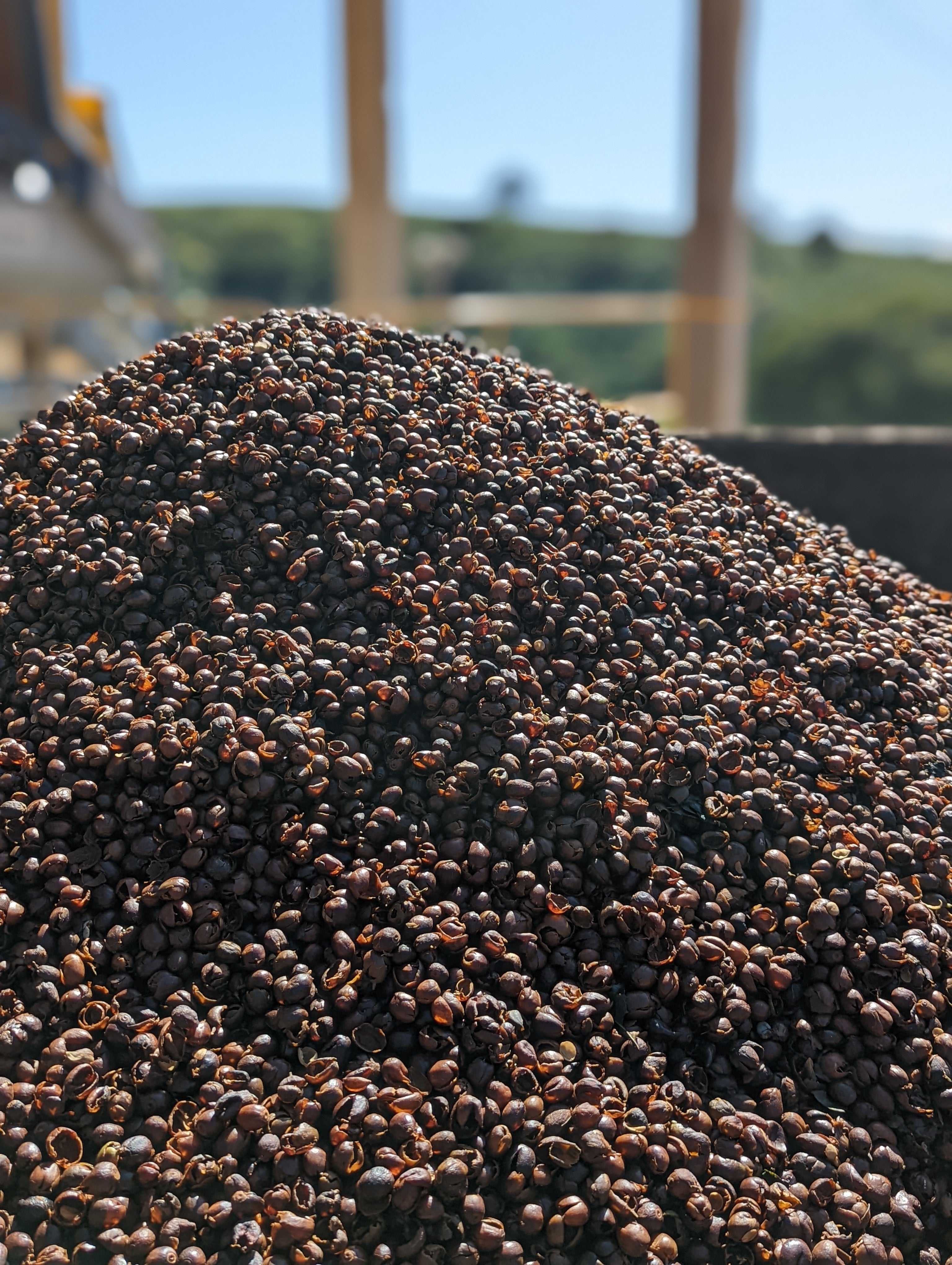

What on Earth is ‘Carbonic Maceration’? A Handy Guide to Coffee Processing….

12-01-23
Written by Helena
You’ve probably seen us use the phrases ‘washed process’ and ‘natural process’. You might have even come across phrases like ‘honey-process’, ‘macerated’ or ‘anaerobic fermentation’...
But what does all this confusing coffee jargon mean? And how can you use these words and labels to help you pick coffee that’s right for you?
Well, we’ve gone and broken it down for you in a handy blog post, complete with links to (optional) further reading from the experts.
What is coffee ‘processing’?
Coffee is harvested from the tree as a ‘cherry’, the fruit of the coffee plant. Inside each cherry are usually two coffee seeds or ‘coffee beans’. Coffee processing is the preparation of the coffee seed so that it is ready for transport and roasting. This involves removing the fruit layers, washing, drying and sorting the seeds. These steps can happen in different orders, on different timescales and with different equipment, ultimately resulting in different levels of fermentation and flavour development within the seed.
Natural Process / Dry Process
Natural coffees are dried within the full cherry, often on patios or raised beds. The coffee must be monitored and raked regularly to ensure even drying, and the process can take many weeks. The coffee fruit is rich in natural sugars and encourages fermentation to take place as the coffee dries. The fruit is removed once the coffee has reached the desired level of moisture content. The general consensus is that this method results in sweet, rich, full-bodied coffees, with a medium level of acidity.
Washed Process / Wet Process
The washed process involves removing the skin and mucilage (flesh) of the fruit from the seed, so that the ‘wet’ part is exposed. At this stage, the coffee is soaked in large tanks of water which kickstarts the fermentation process. The coffee is then dried on patios, raised beds, or in mechanical coffee dryers. This process tends to result in a very ‘clean’ cup, with brighter acidity, highlighting the delicate flavours of the seed itself.
Honey Process / Pulped Natural
This method aims to achieve the best of both worlds, by removing the skin of the fruit but keeping some of the mucilage intact for drying. The aim is to have the high sweetness and body of a natural-process, while retaining the clarity and acidity of a washed-process. Differing amounts of fruit mucilage can be left on the seed, to achieve different results. When you see the words ‘yellow honey’ or ‘red honey’, the colours are describing how much of the fruit was left on for the drying stage. Honey process coffees are thought to be some of the sweetest.
Experimental Processes eg. Carbonic Maceration, Anaerobic, Thermal Shock
In recent years we have seen more and more coffee producers experimenting with fermentation methods, to increase complexity and ‘turn up the volume’ of a coffee. This is exciting stuff, but often very risky and labour-intensive for the producer. While we love a new coffee trend, we strongly believe that we should always consider the impact on the producer and strive to ensure they are properly compensated for this extra work.
One method that is becoming increasingly common is what is often called the ‘Anaerobic’ method. This generally involves sealing the coffee in a container with an airlock. The idea is to create a temperature-controlled environment that is low in oxygen but high in carbon dioxide, to encourage the development of different yeasts and organic compounds, while discouraging spoilage. Carbonic Maceration is a similar method, where whole coffee cherries are placed in sealed containers and then flushed with carbon dioxide.
Want More Information?
If you want to better understand these new and emerging coffee processes, Christopher Feran has written ‘A sort-of glossary of coffee processes’ which details these methods in a very accessible way.
And if you can’t get enough of all things fermentation, we strongly recommend Lucia Solis' podcast ‘Making Coffee’. Lucia is a coffee-processing specialist, who works with producers to find fermentation methods that work well for their coffee, helping them recreate consistent results on a larger scale.
